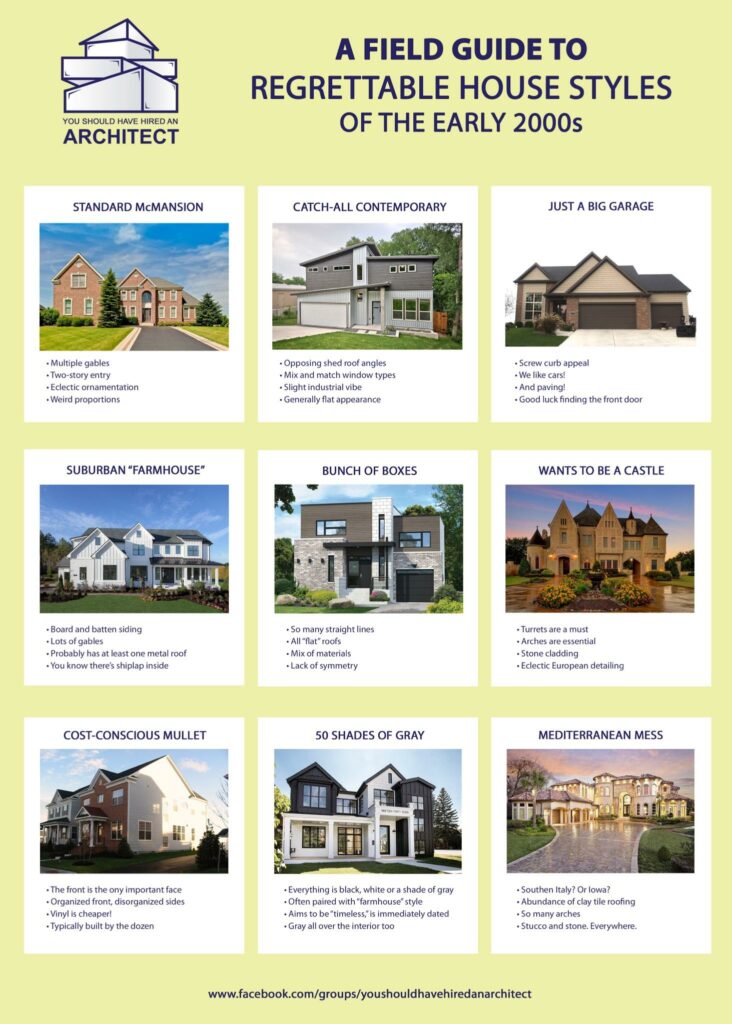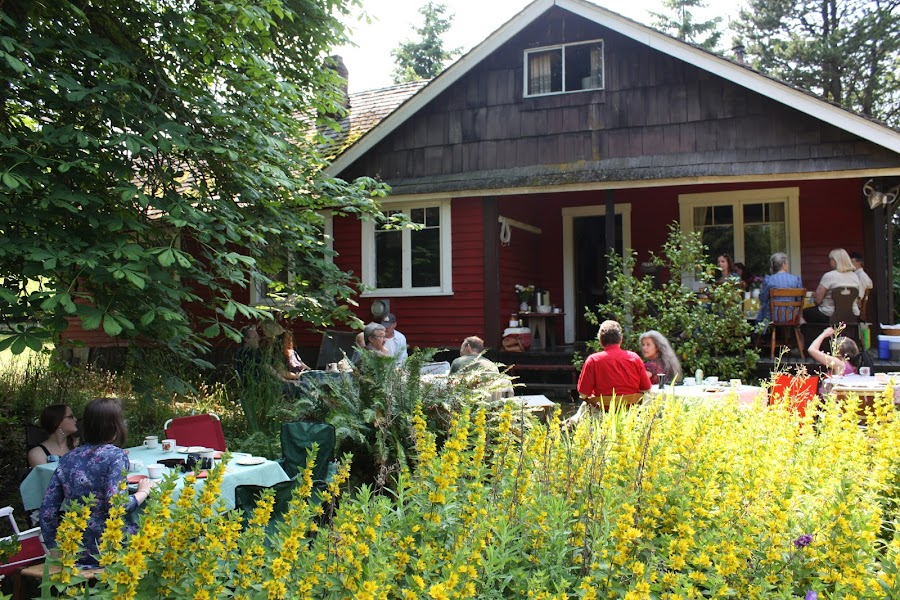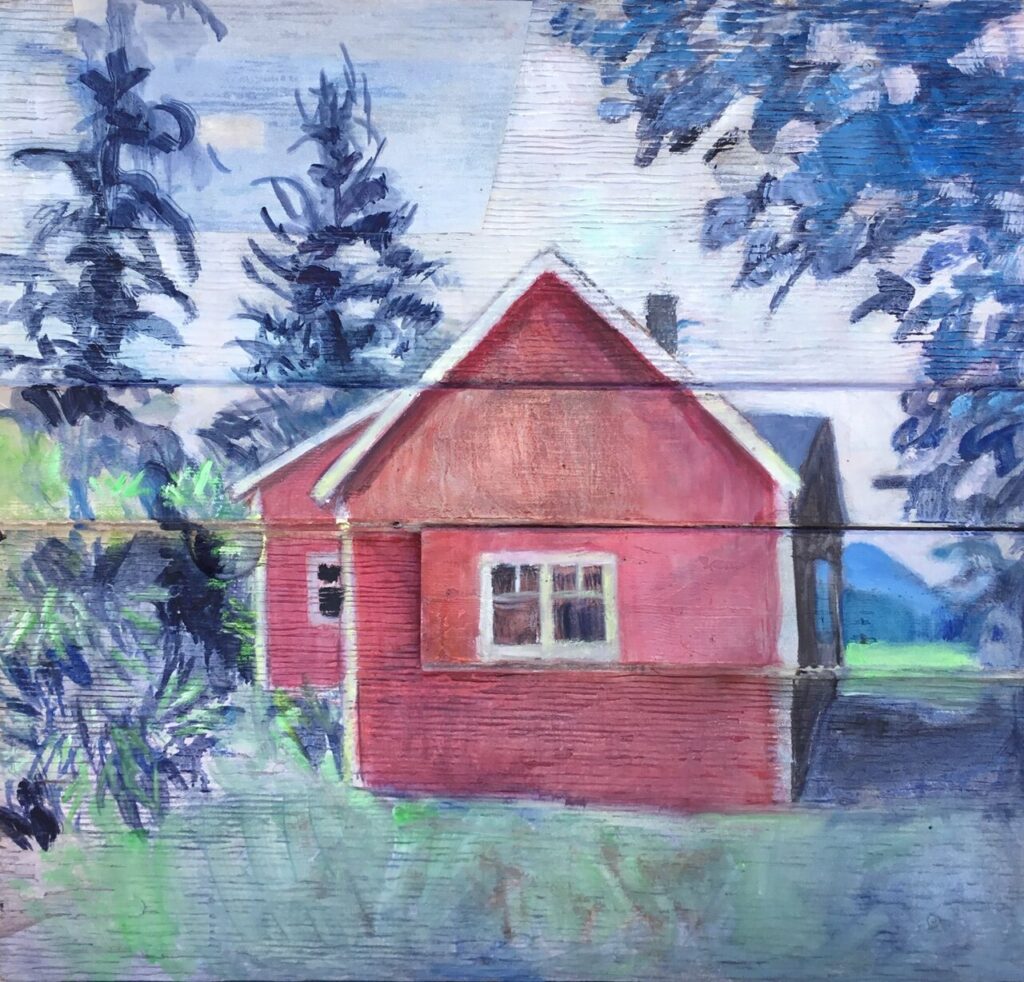I have always loved heritage homes. There is something so cozy, inviting, and inherently homey about them to me. The current styles of architecture, with the square shapes, McMansion ostentation, and colour palette of taupe, brown, beige, and muted grey, just don’t do it for me.

I think I can trace my love of heritage home back to my experiences visiting my grandparents at their home in Duncan. The house was built in the late 1800s, and sat on a rambling acre and a half. I loved the dark wood interior, the wood stove, and the feeling of calm and peace inside. My grandparents were quite old-fashioned, and lived without modern conveniences like a TV, a computer, and a microwave. I was always awed and moved by the sense of stillness and timelessness in the house.


Both of my grandparents have now passed, and unfortunately, due to a dispute over the estate caused by one aunt wanting the most profit possible, the house was sold to a developer. A big condo complex now sits on that same lot. It is a source of grief for me that a place that was like home to me, and which is so vivid in my memories, is gone forever. That the big chestnut tree that we liked to sit under, which must have been a century or so old, is no more. That I can’t go back down the familiar roads, turn down the narrow gravel driveway, and see the warm light shining in the kitchen window. Maybe a hundred people live there now, not knowing anything about the family that lived there for sixty years. We may have not known the people who lived in it before us, but we were connected to them through the sharing and honouring the same space, and the same land, tending and nurturing the trees and that they had left us and planting new ones. That is the beauty of a heritage home– a sense of continuity. When the land is mown over to make way for bigger, better, quicker to build, more bang for your buck, that connection is lost. I appreciate heritage homes for their connection to history, sustainability (how many perfectly good homes are demolished just so someone can make more money?), and, more simply, for their aesthetic beauty.

Although I’m really interested in heritage houses, and follow some groups on Facebook, I realized that I don’t actually know that much about the different styles and their histories. So I am going to focus my inquiry on becoming more informed about historic architecture. Because this is a huge topic, I have narrowed my focus to heritage houses in North America. I am going to explore different issues around heritage homes (the challenges in maintaining them, their legal protection) as well as delving into the actual styles themselves. There are 10 weeks left in our semester after this week, so I have made a weekly learning plan where I will inquire into 10 subtopics.
- Why preserve heritage homes? Is it just a sentimental attachment or is there value in heritage home re. history/culture, sustainability, community character? Can they be preserved even when there is a need for housing?
- What are some problems with heritage homes– such as asbestos, lead paint, et cetera? How can these be mitigated?
- Time to get into different architectural styles! We will start early, with Salt Box homes.
- Italianate
- Queen Anne
- Antebellum architecture (this has complicated and painful history attached to it, which I want to delve into it.
- Tudor Revival
- Dutch Colonial
- The heritage homes of Victoria
- The status of the preservation of heritage homes in Canada and U.S.– what is the state of their legal protection? Are they endangered? What does the future of heritage preservation look like?
I hope you will be interested in following along on my journey of architectural and historical discovery, and enjoy some pretty pictures along the way!